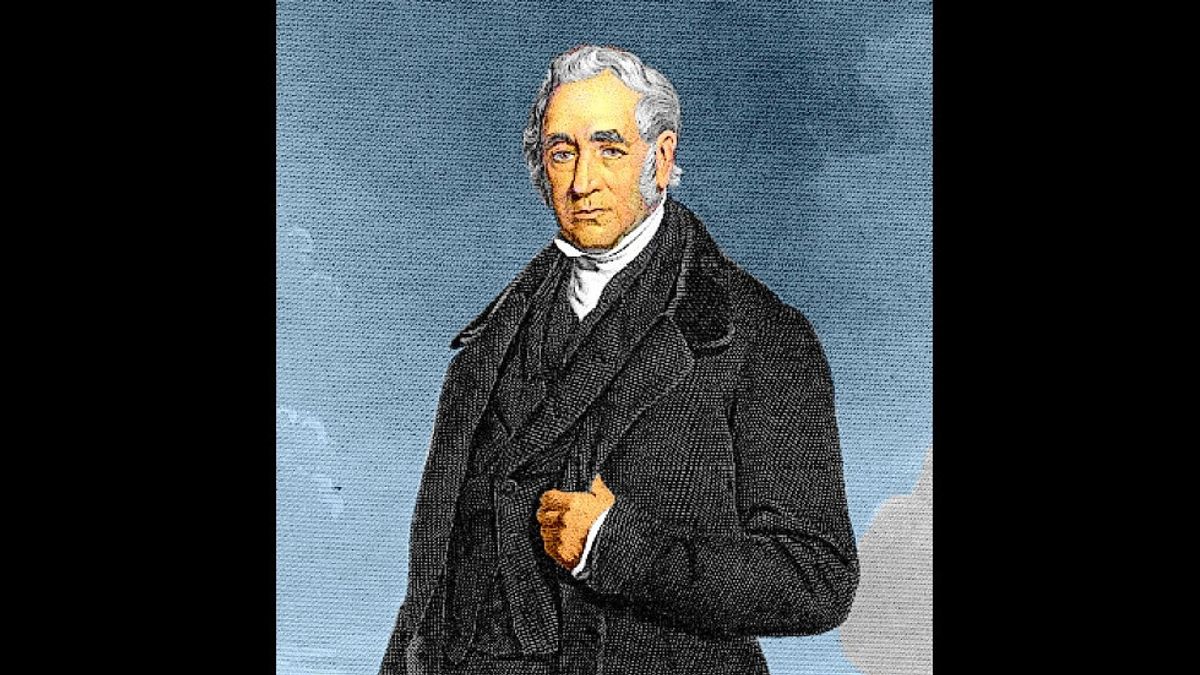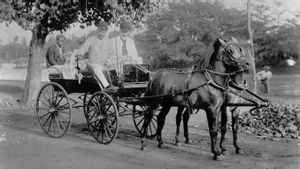JAKARTA - On June 9, 1781, in Wylam, Northumberland, England, a boy named George Stephenson was born. Unexpectedly, that birth was the beginning of all the ease of human movement in transportation. Stephenson is the principal inventor of the railroad locomotive.
Stephenson was the son of a mechanic who operated the atmospheric-steam engine invented by Thomas Newcomen. The machine is used to pump out the coal mine.
Stephenson worked from an early age and did not attend formal school. At the age of 19, he was able to operate the Newcomen machine. This curiosity was aroused by the news of the Napoleonic Wars. He then enrolled in a night school to learn to read and write.
Launching Britannica, Tuesday, June 9, at a young age, Stephenson also decided to get married. To earn extra income, he learned to repair shoes, fix clocks, and cut clothes for the miner's wife.
He also has a friend who works as a mechanic, namely Sir William Fairbairn. Sometimes Stephenson takes over the machine part time. Stephenson's genius operating the steam engine earned him the position of chief mechanic at the Killingworth coal mine.
Stephenson's turning pointThe death of Stephenson's wife made him live alone with his son named Robert. Stephenson sent his son to school in Newcastle to study mathematics.
Every night, when the boy came home, Stephenson and his son did homework together. They both studied mathematics. This method also made Robert a genius son who would later follow in his father's footsteps in the world of locomotives.
In 1813, George Stephenson visited a neighboring coal mine to inspect the "steam boiler" built by John Blenkinsop to haul coal out of the mine. In the belief that the machine can't pull traction on the wooden rails, Blenkinsop gave him wheels that run on a stuck third rail, an arrangement that often causes breakage.
Seeing these conditions, Stephenson thought he could make a better tool. After negotiating with Lord Ravensworth, the principal owner of the Killingworth mine, he built the Blucher, an engine that pulled eight carts. The train can load 30 tonnes of coal at a speed of 6 kilometers per hour.
Dissatisfied, Stephenson attempted to increase the power of his locomotive and introduce "steam bursts". The steam jet allows the exhaust vapor to be diverted up the chimney, drawing in air afterward and increasing the wind.
The new design made locomotives practical. Over the next several years, Stephenson built several locomotives for Killingworth and other mines. Stephenson also gained fame by inventing mine safety lights.
In 1821, he heard of a project for a railroad to be built from Stockton to Darlington to facilitate coal exploitation. In Darlington. Stephenson interviewed the promoter, Edward Pease. The interview impressed Pease, so Pease commissioned Stephenson to build a steam locomotive for the line.
On September 27, 1825, rail transport was born, when the first public passenger train towed by Stephenson's Active - later named Locomotion - ran from Darlington to Stockton. The circuit was carrying 450 people at a speed of 24 kilometers per hour.
Liverpool and Manchester interests called on Stephenson to build a 64-kilometer rail line to connect the two cities. Not an easy thing for Stephenson to expand his investment.
In order to survey and build railroads, Stephenson had to face the frightened protests of peasants and landlords. They fear that trains will replace horse-drawn transport and close the market for oats.
When the Liverpool-Manchester line was nearing completion in 1829, a competition was held for locomotives. Stephenson's new Rocket engine, which he built with his son Robert, won at a speed of 58 km per hour. Eight locomotives were in use when the Liverpool-Manchester line opened on 15 September 1830 and all were built according to Stephenson's calculations and directions.
Since then, rail has spread rapidly throughout Britain, Europe and North America. George Stephenson became a revolutionary in the transportation media, solving problems of road building, bridge design and locomotive building. He built many other railways in the Midlands and acted as a consultant on many rail projects at home and abroad.
The English, Chinese, Japanese, Arabic, and French versions are automatically generated by the AI. So there may still be inaccuracies in translating, please always see Indonesian as our main language. (system supported by DigitalSiber.id)









